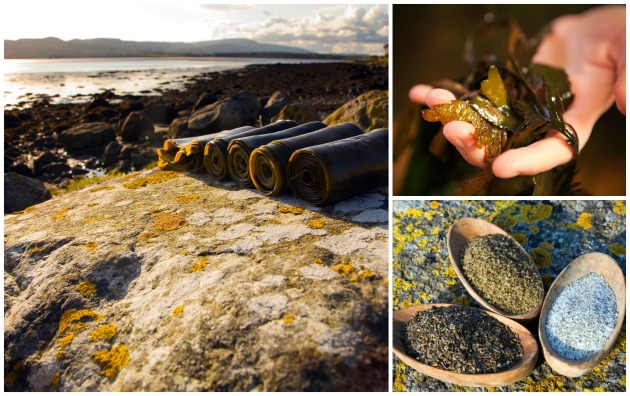
The coast off County Sligo is rich in natural seaweed, that is carefully hand harvested and now used in a variety of beauty and health treatments
Seaweed. Not only is it one of the true superfoods, rich in sea minerals and delicious (in my opinion!) to eat, but it appears to be a pretty effective topical product too, suitable for treating all sorts of complaints, from eczema to rheumatic pains.
I recently interviewed Mark and Kira Walton, who run the renowned Voya seaweed baths in Strandhill on the rugged west coast of Ireland, and have an international seaweed beauty brand of the same name (Voya).
I’d love to visit one day, not least because the west coast of Ireland looks like one of the most spectacularly beautiful places on earth. I have to confess I’ve never ventured further than Dublin, my father’s birthplace, on my three visits to the Emerald Isle.
In the meantime, Voya have kindly sent me all the ingredients to recreate a wonderful seaweed spa treatment in my own home; a box of their hand-harvested, organic seaweed (it expands like magic when immersed in hot bath water), an organic beesewax candle with essential oils to ensure your bathroom smells like a super-posh spa, and a natural reed diffuser for the home.
I tried them out this past weekend, and will be posting my review on Thursday. Until then, here’s a little more on the inspiring story behind Voya, and the famous seaweed baths of County Sligo….
—————————————————————————————————————————–
Seaweed baths are Ireland’s only indigenous natural therapy, and their history dates back over 300 years.
In the early 1900s there were several hundred seaweed bathhouses scattered around Ireland’s coastline, with a particular concentration in Sligo. Sadly, the worst hurricane to ever hit Ireland (Hurricane Debbie) destroyed the county’s last traditional facility in the 1960s. But in the year 2000, the pioneering Walton family opened a modern, a 14-room treatment facility in the bustling seaside town of Strandhill. Freshly picked seaweed is combined with heated seawater to provide therapeutic baths for visitors from all over the world.
“The baths can be used to treat a variety of complaints, such as psoriasis, eczema, rheumatic pains,” says Mark. “Around 60 per cent of visitors come with genuine skin complaints, while the other 40 per cent are attracted by the beauty benefits.”
Thanks largely to the Waltons, Sligo has been revived as a seaweed bath mecca, with the local population of 2,000 swelling to 40,000 each year with the influx of health tourists.
Mark says: “Around 40 per of our customers in Sligo are international, and they were saying to us ‘we can’t come back every year, so how can we take the experience with us?’.
“We started looking at what seaweed products were around at the time – there were some, but their efficacy was poor and they weren’t organic.”
The couple’s very first product in 2001 was a wild seaweed (fucus serratus) bath product – called Lazy Days. It’s a dried block of seaweed, around half the size of a shoebox, that comes wrapped in a net. When immersed in warm water it expands to five times its original size to create a rich seaweed bath. Further squeezing the seaweed releases a nutritious oily gel.
“The product is dried out naturally at low tide on the beach, so it’s still live and active when it reaches the customer,” says Kira.
“You can also keep the seaweed in its net, dampen it and use it as a loofah. And when you’re finished, it makes an organic fertiliser for your garden,” she says.
More than a decade later, the Walton’s Voya brand now offers over 100 products in its range, and one of the best sellers is My Little Hero, an oil-based seaweed anti-ageing serum.
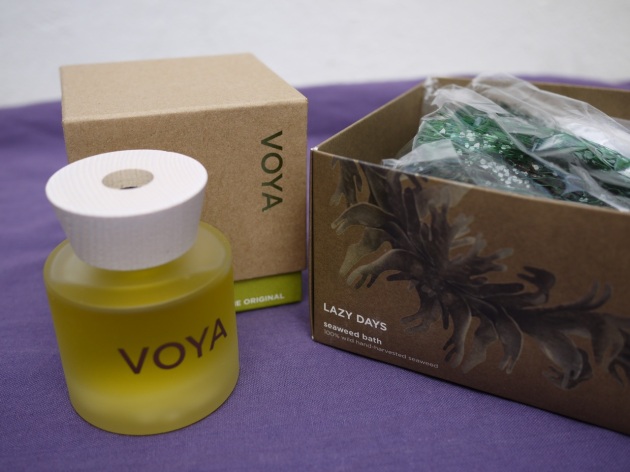
Voya’s reed diffuser oil (left) and its popular Lazy Days seaweed bath product (right) that’s sold to customers worldwide
Seaweed benefits
The beneficial properties of seaweed – of which there are around 800 varieties – are now well researched and recognised. The edible varieties are widely eaten in Asia, for their taste and health benefits, but combining seaweed into beauty products also appears to pack a nutritional punch.
“Its nutrient content means it’s fabulous for hair and nails, and it’s particularly good for Europeans who tend to have a lot of mineral deficiencies,” says Kira.
“There’s no other plant like it – it has an 85 per cent mineral content. If you compare that to something like pomegranate, whose health properties have also been championed – that only has a 1 to 2 per cent nutrient content with the rest being made up of water and sugars.”
Seaweed is high in algal polyphenols and carotenoids which have been proven to be powerful antioxidants, while as an effective emollient it has both anti-inflammatory actions and tissue renewal properties.
It’s fair to say that seaweed is in the Walton family’s blood, with the origins of their business dating back several generations, to the early 1900s. They also harvest the seaweed in a sustainable way, and it’s completely natural and organic.
Mark says: “My father grew up with a simple view on life and always considered the impact on others. When chemical fertilisers were being used to great effect during the 60s and 70s, my father saw no reason to change the traditions that had been around for hundreds of years.
“He was one of the founders of the organic movement in Ireland, and you’ll still find him out hand-harvesting seaweed, even though he’s now in his 60s.”
Sustainable harvest
Seaweed harvesting for the Waltons is a year-round business – involving a daily team of at least four hand-harvesters. Output is higher in the summer because of the longer daylight hours and the absence of giant waves which frequently pound the Atlantic coastline in winter.
The seaweed’s nutrient values can also differ from winter to summer, with a higher vitamin content in the summer and higher mineral content in the winter.
In line with its strong ecological values, Voya has been instrumental in pioneering a sustainable harvesting method that has now passed into European law.
“Seaweed has no roots – if you cut the plant you kill it – but there’s a very fine line. If you take 60 per cent of the plant it takes two years to grow back, whereas if you take 40 per cent it re-grows in six to eight months. We’ve pioneered this way of harvesting,” says Mark.
Mark adds that Sligo, where the north Atlantic drift meets Ireland’s north-west coast, lies in an area that’s highly favourable for seaweed stocks. He says: “With around 30 millions tonnes of biomass, supplies will never run out.”
For more details on the Voya seaweed baths and the wonderful treatments they offer, visit their website.
This Thursday on Life and Chai, read the review of my home seaweed bath experience!
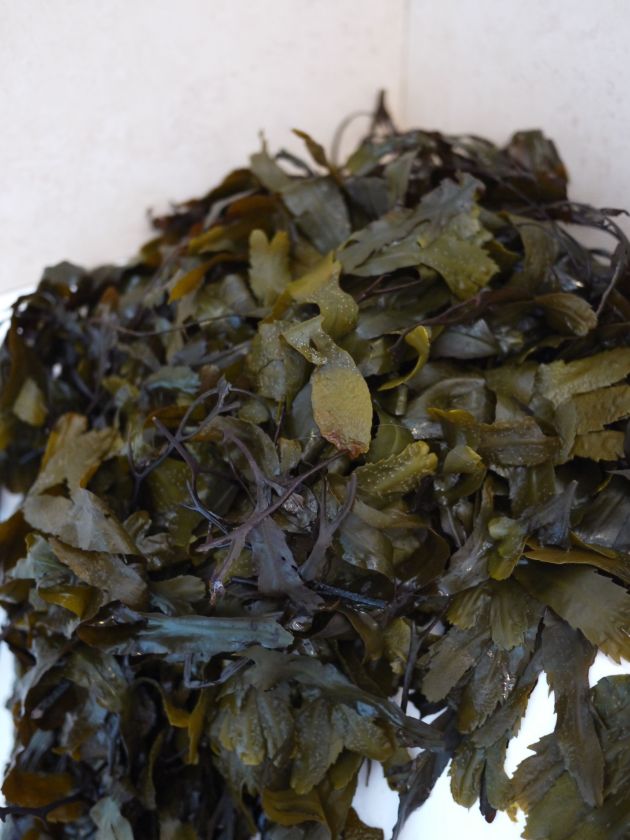

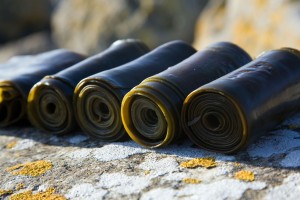
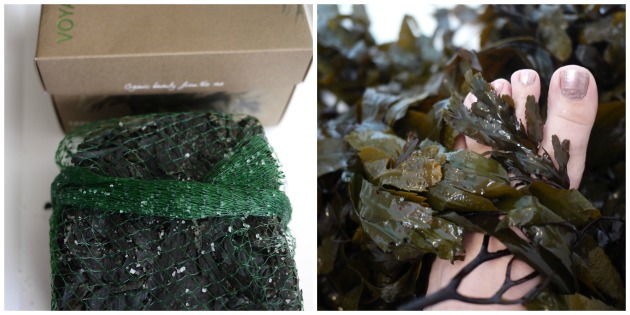



Thank you Kimberly. That’s very interesting. I’ve never heard of Limu, but after looking it up I see it originates from the South Pacific. I’ll have to give it a try! I look forward to the next blog hop. Thanks for hosting (I like the theme).
What an interesting post. I started using a lifestyle drink called Limu. It has the brown seaweed, Fucoidan, in it. 99 helpful ways for your body. Thank you for linking up for the Traffic Jam Weekend.